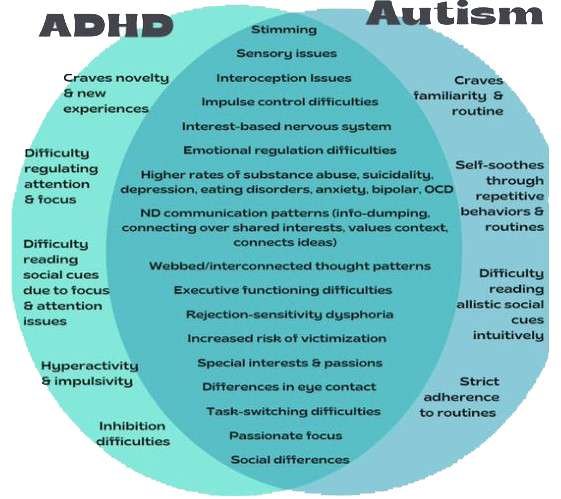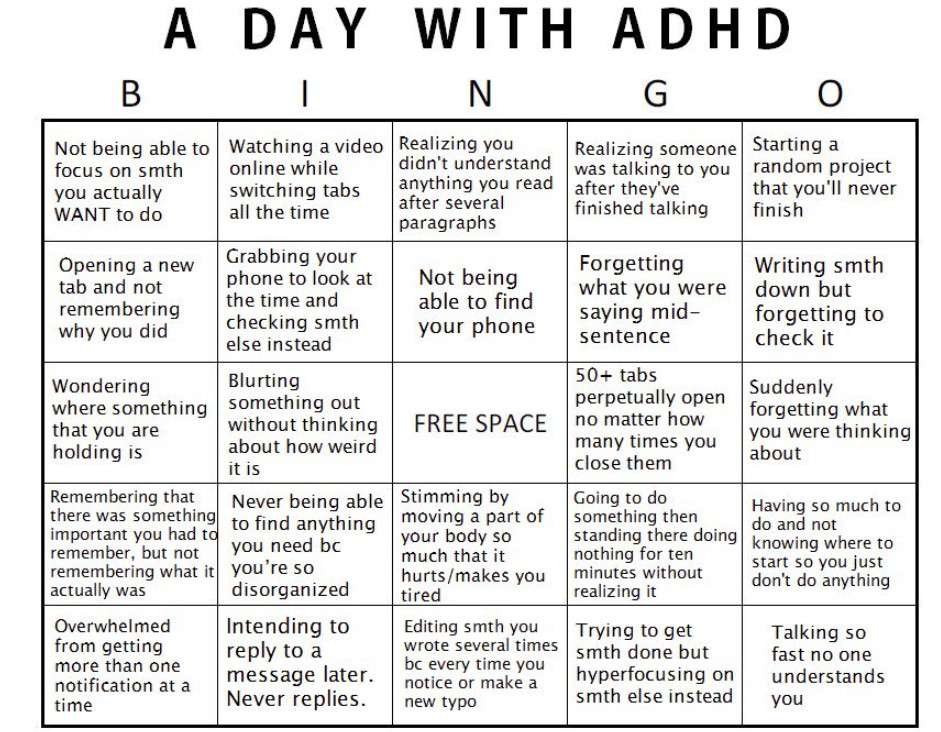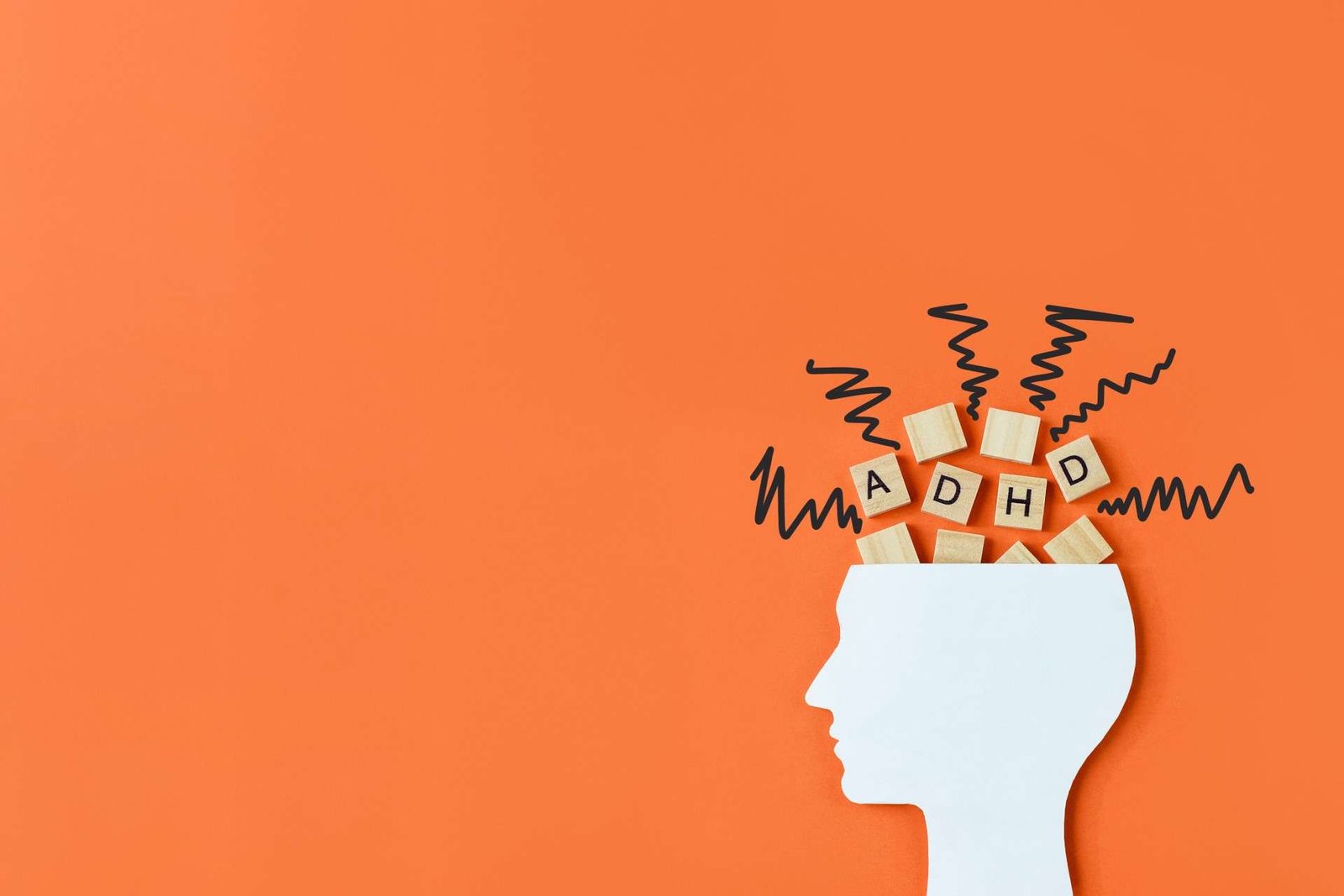A few months after I received my Autism diagnosis, the psychiatrist I’d been seeing suggested that I also had ADHD-like (attention deficit hyperactivity disorder) symptoms, and sent me for psychometric testing.
I have written about this before, outlining the range of assessments I underwent, the results, and the reasons why the clinical psychologist (who is now my regular psychologist) ultimately concluded that I did not meet the criteria for ADHD.
However, as chance (or in this case, wiring) would have it, my nearest and dearest does.
My wife (who I continue to refer to as ‘my wife’ on this website because she has requested anonymity) received her ADHD diagnosis almost 12 months ago, around the same time I received my Autism diagnosis. (So yes, it has been a big 12 months in our household.)
Like my Autism diagnosis was for me, my wife’s ADHD diagnosis was a bombshell moment that at once, and finally, provided in large part an explanation for so many unanswered questions, while also causing monumental upheaval to her sense of self and her general place in the world – something she is still struggling to re-establish.
As the diagram below shows, ADHD and Autism share much, with this significant overlap often making it difficult for even the most ‘aware’ health professional to discern between the two conditions when making a diagnosis.

Also as with Autism, there are many damaging myths doing the rounds on the internet (and seemingly in the minds of certain “academics” – this ‘bullshit study’ (that’s the technical term 😁) is less than two years old and characterised by obviously very astute (not!) authors who believe that ADHD is a “prevalent mental disorder among children worldwide”) muddying already murky waters about precisely what ADHD is.
But I can tell you, factually and categorically (because I, and more importantly my wife, have sifted through the aforementioned various piles of ‘shit’ – also technical speak – on the internet to find the nuggets of truth), what ADHD isn’t.
ADHD is not:
- a mental health condition (though these can, and often do, co-occur)
- curable
- only a childhood condition
- a condition that only occurs in males
- caused by bad parenting (no, that’s just lifelong trauma), or vaccines, or diet, or food additives, or refined sugar
- made up or imaginary
Historically there have been differences in the ways males and females present with ADHD, and, of course and unfortunately, the male type is the one that’s used to form the diagnostic criteria.
While not curable, ADHD does feature one significant “advantage” over Autism: you can take medication to, in theory, manage it and ease some of its impacts.
Stimulants are among the most successful psychotropic drugs on the market in terms of their efficacy for the condition they’re treating. In ADHD brains, they work by increasing dopamine and, as a consequence, can heighten a person’s focus and attention to detail. They can also help with emotional dysregulation.
ADHD, like Autism, is a neurodevelopmental condition that affects your brain and nervous system. But, significantly, it also affects brain development.
ADHD is not, as was once widely believed, a behavioural condition. Instead, differences in the brain of a person with ADHD can cause behavioural issues, including emotional dysregulation or impulsivity, and affect the way people with ADHD think, learn, and interact with others.
Left untreated, ADHD can cause significant issues with day-to-day functioning at home and at work, making completing the types of tasks many of us take for granted a living nightmare.
Generally speaking, people with ADHD will have some or all of the following:
- an interest-based nervous system
- hyperfixations
- executive dysfunction, including issues with working memory, organisation, planning, prioritising, time management, and problem solving
- sensory sensitivities
- issues with procrastination
- emotional dysregulation
- rejection sensitivity dysphoria
- intrusive thoughts
Besides the above, people with ADHD may engage in substance misuse (binge eating or drinking, gambling, speeding etc) because they are seeking to replace missing levels of dopamine, and/or because they are trying to regulate their emotions.
Under the guidance of her psychiatrist and GP, my wife has taken several different courses of stimulant and non-stimulant medication since the beginning of 2023 as she continues to try and find the ‘best fit’ and correct dosage for her specific version of ADHD – not a straightforward endeavour given that while these medications have many benefits, they also come with a variety of sometimes disturbing side effects.
However, observing her in daily life and speaking with her about her experience using ADHD medication, my wife is, overall, feeling a bit better being on the medication than not being on it.
When the medication is active (a period of around 4 hours), her mood is a little steadier, she is slightly more attentive, and she has fewer intrusive thoughts.
The stimulant she’s on is, as I’ve mentioned, not a cure all. But, in conjunction with support from an occupational therapist and psychologist, it does allow her to traverse a less rocky road as she adjusts to life knowing she is an ADHDer.

Raising awareness, including debunking a lot of the misleading and outdated information on the internet, is some of the best ways I know to help thrust debilitating, life-altering conditions like ADHD and Autism further into the general population’s consciousness – if only ever so slightly.
Getting a diagnosis, a correct diagnosis, if possible, is also vital in improving an individual’s quality of life and future outcomes.
My wife and I are living proof of the seemingly endless struggles living a life ‘not knowing’ can result in, as well as the improvements that you can make once you’re finally able to pinpoint the reasons for a lifetime’s confusion and alienation.
Each of us have a long way to go on our respective journeys, but at least we’re now pointed in the right direction.
It’s why I’ve devoted this blog article to helping promote ADHD Awareness Month and why I’m standing in solidarity with my neurodivergent cousins.
Visit Additude’s website for more dedicated information about ADHD Awareness Month this October.
ADHD Australia’s website contains a range of information, including information on co-occurring conditions like Autism, and statistics, for people who would like to learn more about ADHD.
*Please note that when you click on the links in this article, I receive no financial remuneration.

Did you find this article helpful? Did it resonate with you or in some way make you stop and think? Writing these pieces takes time and effort, and your support can make a real difference in helping to keep this content flowing. If you enjoyed this post and would like to read more articles like this in the future, please consider donating a small amount to help me cover the costs of running this website. I’m not in this to get rich (and trust me, I won’t! 😉), but your contribution helps sustain the effort that goes into crafting fresh, Autism-friendly content. Your support is greatly appreciated. Thank you!

